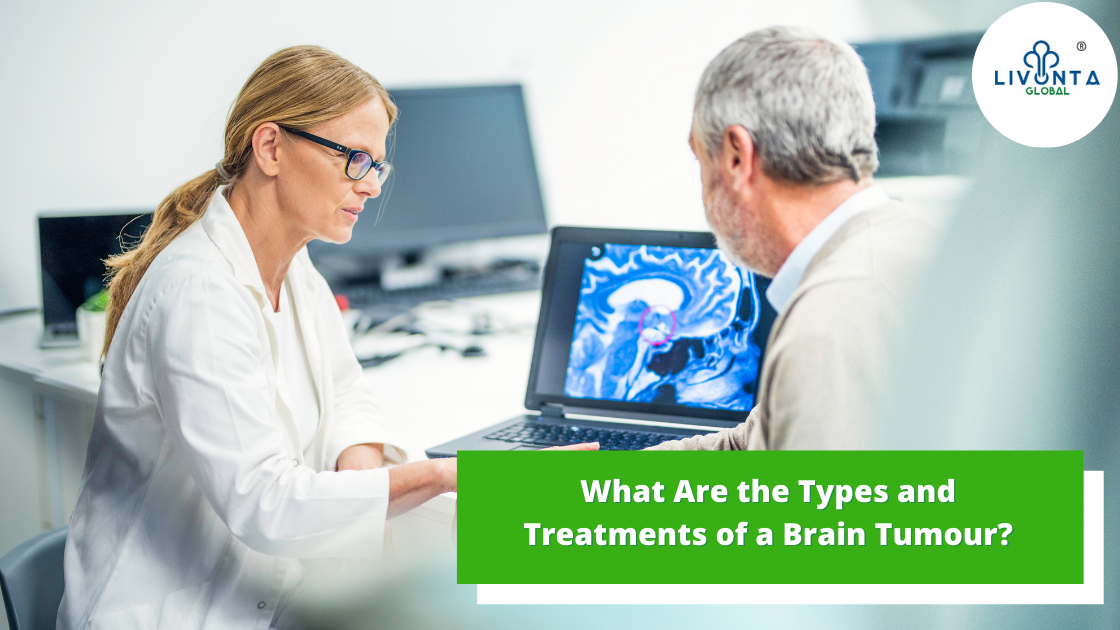
What Are the Types and Treatments of a Brain Tumour?
A brain tumour is a cluster of abnormal cells which grow in and around of your brain. A brain tumour can directly or indirectly destroy healthy cells by crowding other parts of the brain. Thereby it causes inflammation, swelling and pressure within the skull. Nowadays, many hospitals are offering the best cancer treatment in India where you will get adequate treatment for your brain tumour. Livonta Global has a prominent presence in the field of medical tourism. If you are looking for the best cancer treatment in India, you should get in touch with Livonta Global.
Types of Brain Tumour
A brain tumour can be two types and they are benign and malignant.
- Benign tumour: A benign (non-cancerous) tumour is a group of cells that grows slowly and don’t spread to other parts of the body. If the tumour is removed safely, then, it usually doesn’t come back.
- Malignant tumour: A cancerous brain tumour is a mass or growth of abnormal cells in the brain. This tumour can start in the brain but spread other parts of the body.
A brain tumour can also be divided into two other categories.
- Primary tumour: This type of tumour originates in the brain
- Secondary tumour: This is the tumour which has spread from other parts of the body
Risk factors for brain Tumour
- Family history: only 5-10% of brain tumours are genetically inherited. If several members of your family are diagnosed with a brain tumour, then, you must consult with a doctor.
- Age: the risk of tumours increases with your age
- Chemical exposure: If you are exposed to certain chemicals for a long time, then it may enhance the risk of brain tumour.
- Exposure to radiation: People who are exposed to ionizing radiation have an increased risk of brain tumours.
- No history of chickenpox: As per the American Brain Tumour Association, if you have experienced chickenpox in your childhood, then you are less susceptible to a brain tumour.
Symptoms of brain tumour
- Headache is a common symptom of brain tumour. You may experience a headache while you are sleeping or awakening in the morning.
- Vomiting
- Confusion
- Blurred vision
- Memory loss
- Changes in the ability to hear, taste, or smell
- Loss of balance
- Difficulty while walking
- Muscle weakness
- Sensitivity to heat and cold
- Hand tremors
How brain tumour is diagnosed?
A brain tumour is diagnosed by using the following techniques.
- CT scan of the head
- MRI of the head
- Angiography
- Skull X-rays
- Biopsy
Treatment of tumours
The proper treatment of brain tumour depends on the following things.
- the type of tumour
- the size of the tumour
- the location of the tumour
- your general health conditions
Surgery:
Surgery is the first line of treatment for a brain tumour. In a surgical procedure, the tumour and some surrounding healthy tissue are removed by an expert. A neurosurgeon who is specialized in surgery on the brain and spinal column usually performs the surgery. The surgery of brain tumour can be done in three ways due to the advancement of technology.
- Cortical Mapping (This allows the doctors to identify the areas of the brain which control the senses, language, and motor skills.)
- Enhanced imaging
- A fluorescent dye (5 aminolevulinic acids) can be given by mouth the morning before performing the surgery. This dye is taken up by tumour cells.
Though surgery is an effective method, still, in some cases, surgery is not possible.
- There is not adequate space to access the tumour.
- When the tumour is located in close proximity of the sensitive areas of the brain.
- Metastatic tumour.
Radiotherapy:
Radiation therapy or radiotherapy is the use of high-energy x-rays or other particles which are used to destroy tumour cells. Doctors often use radiation therapy to slow or prevent the growth of a brain tumour. This therapy is given after surgery and along with chemotherapy. The most common type of radiation treatment is called external-beam radiation therapy and in this therapy, radiation is given from a machine outside the body. External-beam radiation therapy can be directed at a brain tumour in the following ways:
- Conventional radiation therapy: In this type of treatment, the treatment location is determined based on anatomic landmarks and x-rays. This technique is appropriate for whole-brain radiation therapy.
- 3-dimensional conformal radiation therapy (3D-CRT): By using images from CT and MRI scans, a 3-dimensional model of the tumour and healthy tissue surrounding the tumour are created on a computer. This model can be used to aim the radiation beams directly at the tumour.
- Intensity-modulated radiation therapy (IMRT): IMRT is a type of 3D-CRT that can more directly target a tumour. In this treatment, high doses of radiation are used to the tumour while fewer doses of radiation are applied to the surrounding healthy tissue.
- Proton therapy: Proton therapy one type of external-beam radiation therapies that uses protons rather than x-rays. At high energy, protons can destroy tumour cells. This therapy is ideal for tumours that have grown into nearby bones (base of the skull, or near optic nerve)
- Stereotactic radiosurgery: In stereotactic radiosurgery, a single and high dose of radiation is given directly to the tumour and not healthy tissue. It works best for a tumour that is only in one area of the brain and noncancerous in nature.
Chemotherapy:
Chemotherapy is the use of drugs to destroy tumour cells. Chemotherapy is applied after surgery or after radiation therapy if the tumour has come back after initial treatment. Chemotherapy can be two types and they are,
- Systemic chemotherapy: In this therapy, medications are injected through veins or giving oral pills. The drugs are selective because not all drugs can cross the Blood-Brain Barrier.
- Local chemotherapy: Here, medications are injected directly into the site of brain tumour. This is mostly used in combination with brain surgery.
Targeted therapy:
This is a treatment that targets the tumour’s specific genes, proteins, or the tissue environment which are responsible for the growth and survival of the tumour. This type of treatment blocks the growth and spread of tumour cells. Two types of targeted therapy can be used for brain tumour.
- Bevacizumab (anti-angiogenesis therapy): Anti-angiogenesis therapy is focused on stopping angiogenesis, which is the process of making new blood vessels. A tumour needs the nutrients delivered by blood vessels to grow and spread. Anti-angiogenesis process prevents the growth of a tumour.
- Larotrectinib: Instead of focusing on a certain type of tumour, this type of targeted therapy focuses on a specific genetic change called an NTRK fusion.
The above article describes various types of brain tumours and their treatment.
If you are looking for the best brain cancer treatment in India, you should connect with Livonta Global. Livonta Global is tied up with many leading hospitals and thus will help you in getting the best treatment for this lethal disease.
Brain Tumour TreatmentTags: best cancer treatment in India, brain tumour Treatments, Risk factors for brain Tumour, Treatments of a Brain Tumour

